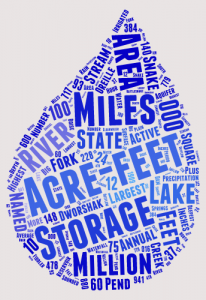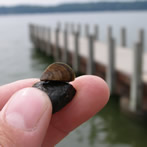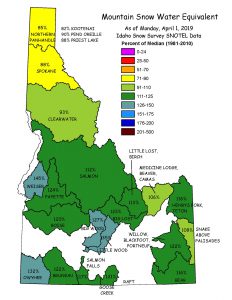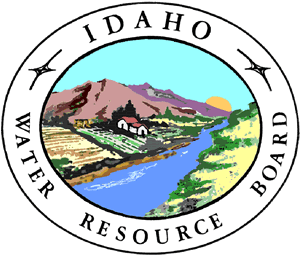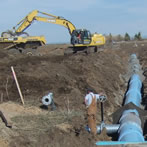Listed below are Idaho’s designated Critical Groundwater Areas. Click the area name for the description as well as orders and related publications.
Upcoming Meetings
| Area | Date Designated | Map | Hydrographs |
|---|---|---|---|
The Blue Gulch CGWA, located in eastern Owyhee and western Twin Falls counties, was declared on December 9, 1970. This declaration was based on a report by Chapman and Ralston (February 1970) which stated that discharge was exceeding recharge. At the time, the area was being considered for increased agricultural development through the federal Desert Land Entry program which would have increased groundwater diversions for irrigation. Outstanding water appropriation permits were anticipated to divert over four times the usage. Designation as a CGWA stopped the processing of new applications while allowing the development of existing permits. A management plan has not been developed nor has an advisory committee been formed. Orders
Related Publications
| December 9, 1970 | Map | Hydrographs |
The Cinder Cone Butte area, located in Elmore County, was declared a CGWA on May 7, 1981 because of declining groundwater levels. Following the declaration, a study was conducted to evaluate the entire Mountain Home area. As a result of that study, the Mountain Home GWMA (which surrounds the Cinder Cone Butte area) was designated on November 9, 1982. New groundwater appropriations are not allowed in the Cinder Cone Butte CGWA. For related information, visit the Mountain Home GWMA page. | May 7, 1981 | Map | Hydrographs |
Curlew Valley is located in southeastern Idaho in Oneida and Power counties and extends south into Utah. The Curlew Valley CGWA was designated on March 15, 1976, and was based on concern that there was not sufficient groundwater supply for existing irrigation uses or to fulfill pending applications and permits. The geographic and hydrogeologic boundaries extend into Utah. In the southern part of the basin, Locomotive Springs is an area of discharge for the aquifer and a Utah state wildlife management area. The State of Utah expressed concern that increased groundwater withdrawals in Idaho were impacting the spring flows. No further studies have been conducted since designation of the CGWA to determine adequacy of supply or impacts on spring flows. A management plan has not been developed for the area nor has an advisory committee been formed. Orders
Related Publications
| March 15, 1976 | Map | Hydrographs |
The Oakley Fan is located in northeastern Twin Falls and western Cassia Counties. Originally declared as the Goose Creek-Rock Creek CGWA on January 16, 1962, the boundaries were modified on September 6, 1967, creating three separate CGWAs: Artesian City, Cottonwood, and Oakley-Kenyon. On January 19, 1982, the West Oakley Fan CGWA was established. The four areas create a contiguous tract and have been managed as a single unit. The order modifying the boundaries and establishing the initial three areas stated "there does not appear to be available unappropriated groundwater within the boundaries of the three designated areas. Therefore, new appropriations of water shall not be allowed." The West Oakley Fan order did not specifically prohibit new diversions. However, the order stated that a study indicated that the available groundwater was limited. A management plan has not been developed nor has an advisory committee been formed. A groundwater recharge demonstration project has been ongoing in the region since the early 1990s. However, only limited volumes have been recharged. Orders
Related Publications
| January 16, 1962 | Map | Hydrographs |
The Oakley Fan is located in northeastern Twin Falls and western Cassia Counties. Originally declared as the Goose Creek-Rock Creek CGWA on January 16, 1962, the boundaries were modified on September 6, 1967, creating three separate CGWAs: Artesian City, Cottonwood, and Oakley-Kenyon. On January 19, 1982, the West Oakley Fan CGWA was established. The four areas create a contiguous tract and have been managed as a single unit. The order modifying the boundaries and establishing the initial three areas stated "there does not appear to be available unappropriated groundwater within the boundaries of the three designated areas. Therefore, new appropriations of water shall not be allowed." The West Oakley Fan order did not specifically prohibit new diversions. However, the order stated that a study indicated that the available groundwater was limited. A management plan has not been developed nor has an advisory committee been formed. A groundwater recharge demonstration project has been ongoing in the region since the early 1990s. However, only limited volumes have been recharged. Orders
Related Publications
| January 16, 1962 | Map | Hydrographs |
The Oakley Fan is located in northeastern Twin Falls and western Cassia Counties. Originally declared as the Goose Creek-Rock Creek CGWA on January 16, 1962, the boundaries were modified on September 6, 1967, creating three separate CGWAs: Artesian City, Cottonwood, and Oakley-Kenyon. On January 19, 1982, the West Oakley Fan CGWA was established. The four areas create a contiguous tract and have been managed as a single unit. The order modifying the boundaries and establishing the initial three areas stated "there does not appear to be available unappropriated groundwater within the boundaries of the three designated areas. Therefore, new appropriations of water shall not be allowed." The West Oakley Fan order did not specifically prohibit new diversions. However, the order stated that a study indicated that the available groundwater was limited. A management plan has not been developed nor has an advisory committee been formed. A groundwater recharge demonstration project has been ongoing in the region since the early 1990s. However, only limited volumes have been recharged. Orders
Related Publications
| January 16, 1962 | Map | Hydrographs |
The Oakley Fan is located in northeastern Twin Falls and western Cassia Counties. Originally declared as the Goose Creek-Rock Creek CGWA on January 16, 1962, the boundaries were modified on September 6, 1967, creating three separate CGWAs: Artesian City, Cottonwood, and Oakley-Kenyon. On January 19, 1982, the West Oakley Fan CGWA was established. The four areas create a contiguous tract and have been managed as a single unit. The order modifying the boundaries and establishing the initial three areas stated "there does not appear to be available unappropriated groundwater within the boundaries of the three designated areas. Therefore, new appropriations of water shall not be allowed." The West Oakley Fan order did not specifically prohibit new diversions. However, the order stated that a study indicated that the available groundwater was limited. A management plan has not been developed nor has an advisory committee been formed. A groundwater recharge demonstration project has been ongoing in the region since the early 1990s. However, only limited volumes have been recharged. Orders
Related Publications
| January 19, 1982 | Map | Hydrographs |
The Raft River CGWA, located in Cassia County of south-central Idaho, was originally designated on July 23, 1963. Subsequent orders modified the boundaries: eliminating an area on the extreme northern boundary (August 2, 1965); the Albion basin (September 19, 1966); the area north of the Yale-Cotteral Road (November 3, 1970); and, the upper Raft River Valley, Elba, and Yost-Almo subbasins (June 30, 1977). Large-scale groundwater pumping in the Raft River valley began in 1950 and increased through the 1950s. USGS documented declining water levels and decreased stream flow in the Raft River from 1956 through 1960. By 1963, concern over the potential effects of new and increased groundwater use caused the designation as a CGWA. Creation of the management area did not include formation of advisory committee or development of a management plan. Orders
Related Publications
| July 23, 1963 | Map | Hydrographs |


